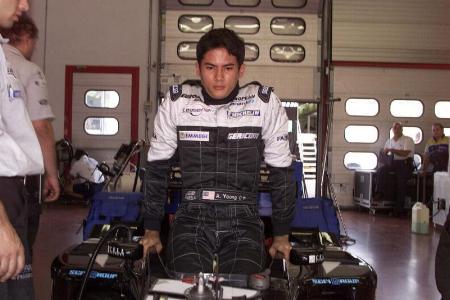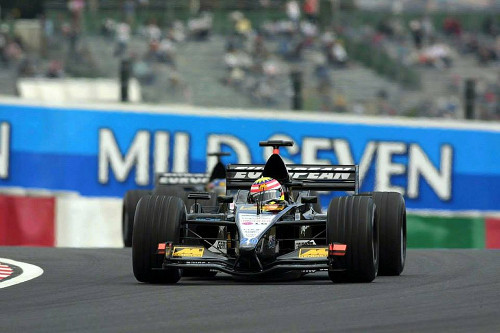Alex Yoong
Until the arrival of Malaysia's Alex Yoong at Minardi in 2001, the only Asian Formula 1 driver not to come from Japan had been Thai Prince Birabongse in the 1950s. Through the construction of the Petronas Twin Towers in 1998, which at the time were the world's tallest skyscrapers, Malaysia was keen to show off its status as a nascent economic power house. Yoong's entry into Formula 1 a few years later, supported by a string of corporate sponsors, was a further sign of this growing self confidence. Born to Malaysian Hanifah Yoong and British Joanna Bean on 20 July, 1976, Alexander Charles Loong Yoong was barely four years old when he vowed to become a professional racing driver, inspired by racing legends Nelson Piquet and Ayrton Senna. He began his racing career with motorcross bikes at the age of eight. In 1992, at 15 years of age, he entered his first car race, driving a Proton Saga to victory.


His first taste of the international racing scene came a year later, when he competed in Macau and took third in his class (Ghia race). Yoong took his career a step further in the 1994 Formula Asia International Series 2000 where he won the last round in Zhuhai, China. With eight wins, he became the Vice Champion and Malaysian Champion in 1995. Thereafter, Yoong moved out of Asia and proceeded to Europe, beginning with the British Formula Renault Sport Championships between 1996 to 1997, and then with the British Formula 3 Championships between 1998 to 1999. In 1999, Yoong also raced in the Italian Formula 3000, the International Formula 3000 Championships and Formula Nippon.
With sponsorship from Magnum Corporation and the strong support given by the Malaysian government, particularly the Ministry of Youths and Sports, Alex had his sight firmly set on Formula 1. For observers at the time, the move came quite sudden when Paul Stoddart announced that he had a deal with Yoong for the final three races of the season. His best result was a 7th spot at Melbourne, during the opening race of the 2002 season. Had Mika Salo in the Toyota not recovered from a spin in the final laps of the race, Yoong would have scored a point and things could have gone very differently. Alas, as the saying goes, F1 is "if" spelled backwards.


Lining up besides Fernando Alonso in 2001 and Mark Webber in 2002, two future aces of the sport, Yoong found it difficult to impress and was constantly outqualified. The lack of performance and failing to make it onto the grid three times affected his self confidence and the decision was made to rest him for two races. Lambasted by the media for his lack of pace, Yoong had reached a low point in his career but determined to bounce back he engaged in a rigorous fitness programme. He returned strongly at the Italian GP, even racing ahead of teammate Webber and Jordan's Takuma Sato when a mechanical issue forced him to wait in the box for a lengthy pitstop. In the final race in Japan, Yoong qualified a mere 0.29 seconds behind Webber, who had kept a clean sheet against his team mates, Yoong and Davidson, all season.
It was too little too late and Yoong left Formula 1. The following year, Yoong competed across the Atlantic in the CART series, scoring points at Monterrey, but money ran out after four races. He regained much of his international reputation when joining the newly created A1GP series where assembled a strong team, including his former Minardi mechanic Greg Wheeler, and won four races in three seasons for Team Malaysia. He later tried his luck in Le Mans, GP2 Asia and V8 Supercars. Most recently, he won the Audi R8 LMS Cup in 2014 and 2015. He also works as a TV commentator.